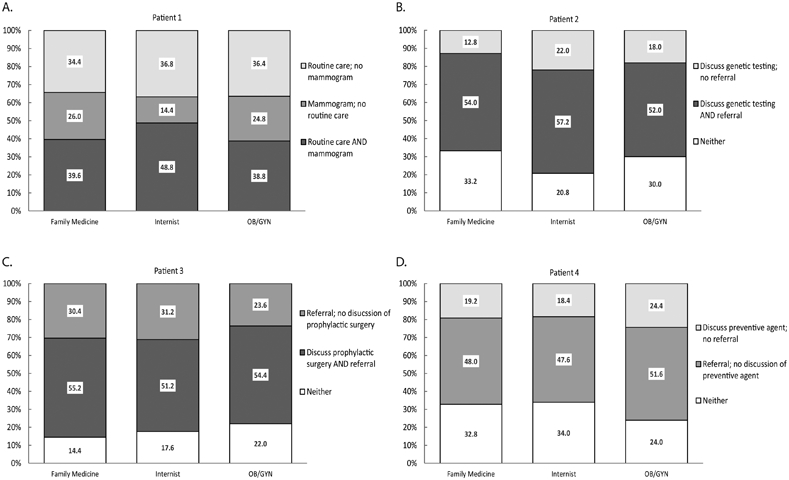Figure 1.

Breakdown of physician responses for clinically recommended course of action for case vignettes presented in Table 5. A) Patient 1 (40 years old; no personal history of breast cancer; no personal history of DCIS; no personal history of LCIS; no first-degree relative with breast cancer); B) Patient 2 (35 years old; no personal history of breast cancer; no personal history of DCIS; no personal history of LCIS; one first-degree relative with breast cancer, diagnosed before age 50; one first-degree relative with ovarian cancer); C) Patient 3 (35 years old; no personal history of breast cancer; no personal history of DCIS; no personal history of LCIS; two first-degree relatives with breast cancer; found to carry a pathogenic BRCA1 mutation); D) Patient 4 (65 years old; no personal history of breast cancer; no personal history of DCIS; no personal history of LCIS; no first-degree relatives with breast cancer; one breast biopsy showing atypical hyperplasia). Light gray bars: percentage of physicians who selected the specified clinically recommended course of action; dark gray bars: percentage of physicians who selected both clinically recommended courses of actions; white bars: percentage of physicians who selected neither of the clinically recommended specified courses of action.
